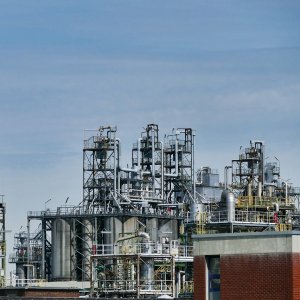SENER Setting Energy Policy to Benefit All Players

STORY INLINE POST
Q: What are the main changes in SENER’s energy policy achievements since the Energy Reform, and which hurdles have to be overcome to make the Reform a success?
A: One of the most important contributions of the Energy Reform is the opening up of Mexico’s hydrocarbons and electricity sectors. A little over a year after its approval, the Energy Reform is generating structural changes that will lead to an increase in Mexico’s energy security and competitiveness. 34 companies have registered for the first licensing phase of Round One and 27 have expressed their interest to participate in the second phase. As a result, we can attract capital and state-of-the-art technology to make the most of our resources in deepwater and unconventional reservoirs in a more efficient manner. This will bring the decline in our country’s oil and gas production to an end. Another government priority is to guarantee the supply of natural gas, an input that the national industry uses in its productive processes to reduce production costs. Since the enactment of the Energy Reform, six gas pipelines have been concluded with seven more under construction, five have been awarded, four are under bidding, and eleven new projects are to be built in the next few years. With these new gas pipelines, natural gas will be supplied to the national power company, CFE, which is modernizing its generation plants to replace fuel oil and diesel. As for power generation matters, the creation of CENACE is a landmark achievement. It will operate the wholesale electricity market from the start of 2016, where both public and private companies will participate under equal conditions.
The Mexican hydrocarbons industry is embedded into a global market that, at this moment, is undergoing a situation of low oil prices. The current landscape represents an international challenge, which makes both public and private companies more selective in their investments. For Mexico, this situation has entailed implications in the public expenditure and could slow down the expansion rhythm of sectors with more onerous extraction costs, such as shale fields or the Chicontepec area. In view of this international landscape, the Energy Reform has shown the world the advantages of investing in our country. Mexico has a stable democracy, an economy with global presence, and macroeconomic stability, which add to the new institutional and regulatory conditions. Moreover, it offers a highly competitive portfolio with profitable opportunities in hydrocarbons, electricity, and renewable energies.
Q: What impact can PEMEX’s participation in the first two shallow water phases of Round One have on its perceived competitiveness?
A: The Energy Reform opens opportunities to new public and private investments and brings Mexico up to date on international bidding practices and methods for the awarding of hydrocarbons exploration and extraction contracts. For the first time in the history of Mexico, public tenders will be open to national and international companies. The Energy Reform established norms, institutions, and weights and counterweights that guarantee the commitment of the State to competitiveness and transparency. This means PEMEX will compete under equal conditions, with the rules being the same for all players. No authority will decide the results of the tenders at its own discretion. At least four entities of the State, two of which are autonomous, will participate in the bidding process and in the administration of the contracts. Companies will have access to the same information, in line with international practices, thus guaranteeing a common ground for everybody. CNH, the regulatory organ, will supervise the bids and the awarding of the contracts in public sessions that will be transmitted in real time over the internet. The procedure includes a pre-qualification stage, which will ensure that the finalists possess proven experience and sufficient financial, technical, and human resources to execute the projects they bid on. The contracts will be awarded to companies providing the highest payment to the State and delivering the greatest investment commitment, according to the objective formula established by the Ministry of Finance and Public Credit, the application of which will be the responsibility of CNH. This new regulatory model establishes the highest international standards in terms of equality and transparency.
Q: How will SENER ensure the availability of skilled labor, given the number of jobs expected to be created over the next four years?
A: With the opening up of the hydrocarbons and electricity sectors, qualified professionals and technicians possessing the knowledge and skills to face Mexico’s future challenges in energy matters will be required. In 2014, the Strategic Program for the Development of Human Resources in the Energy Sector was published. This program implements mechanisms to best use and promote talent development, to identify training needs, and to enable inter-institutional coordination between different entities. This will all go towards the development of a more competitive and dynamic energy sector. For this end, more than 60,000 scholarships will be granted to technical, high school, and postgraduate students, existing educational programs will be adapted, and the development of scientific research, innovation, and technological modernization in Mexico will be promoted.
Q: How is the Mexican government seeking to enhance the overall competitiveness of SMEs in the oil and gas sector so they may benefit from the Energy Reform?
A: The opening up the energy sector to private investment will create new opportunities for the Mexican industry. The Energy Reform promotes the development of suppliers and the strengthening of local production chains through the establishment of minimum national content percentages which will increase from 25% in 2015 to 35% in 2025. These percentages will have to be complied with by any contractors operating hydrocarbon projects in Mexico. Likewise, the State will give preference to national companies when they offer similar prices, quality, and timely delivery conditions. The development of suppliers will also be promoted by financing training programs, research, and the obtaining of certifications through the Public Trust to Promote the Development of National Suppliers and Contractors, which will be operated by the Ministry of Economy in coordination with NAFIN. This trust has an initial budget of MX$200 million for 2015, which will increase to MX$300 million for 2016. Through this trust, the direct participation of companies engaged in activities related to the energy sector will be promoted. Partnerships between Mexican and foreign companies will be encouraged, and we will seek an increase in the transfer of technology and of private investment between local and foreign companies.
Q: From SENER’s perspective, what needs to happen to make Round One a success?
A: The first of the five phases for Round One was announced in December 2014, only four months after the approval of the secondary laws. In a record time, the areas and fields to be tendered, the contracting model, and the relevant technical information were presented. The first tender included 14 exploration blocks in shallow waters off the coasts of Campeche, Tabasco, and Veracruz. By April 20, 49 companies had expressed their interest in participating, 39 had paid for their access to the technical and geological information, and 34 had already registered for the tender. The second call was published by late February 2015, covering nine fields in shallow waters in Campeche and Tabasco, which will be bid on through five extraction contracts. Almost all of these fields have certified reserves and represent a low production cost. Furthermore, the geological risk is considerably reduced, since these fields are at the development stage and do not require exploration. By May 11, 27 companies had expressed their interest in participating and 20 had paid to have access to the Data Room. These numbers reflect interest from companies with experience, capital, and state-of-the art-technology to invest in our country, making it possible to extract resources that were not feasible to obtain in the past.
In the following months, the calls for conventional resources in onshore and mature fields will be revealed, where Mexico offers moderate extraction costs and lesser geological risks. Subsequently, the projects to be tendered in deepwaters will be published, along with unconventional shale oil and gas resources. This diversity of projects will present options for operators at all levels and will generate new businesses in complementary goods and services. With the two calls that have already been announced, we expect to attract investments of US$21 billion in the medium term and to generate over 212,000 jobs, 57,000 of which will be direct.






















